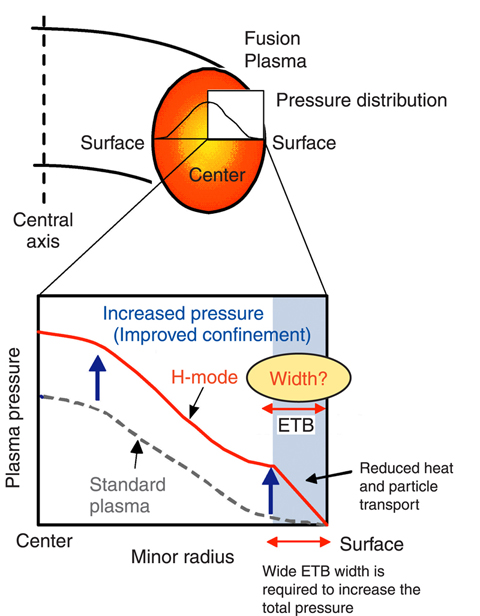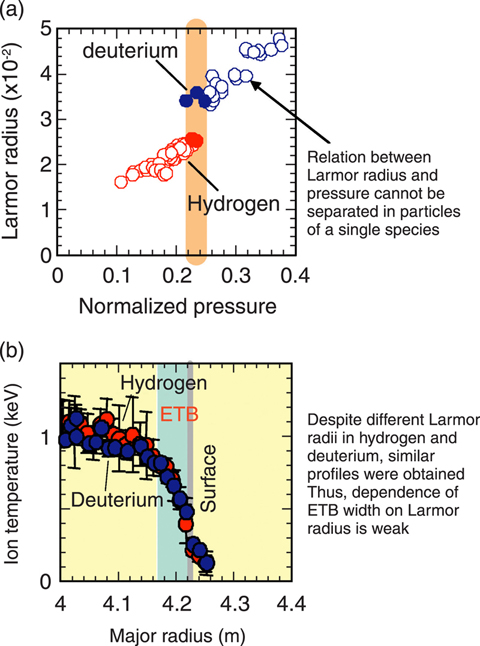
Fig.3-5 Spatial profile of plasma pressure in H-mode

Fig.3-6 (a) Relation between normalized pressure and Larmor radius, (b) Ion temperature profiles in hydrogen and deuterium plasmas
Since the fusion gain is proportional to the square of plasma pressure, sustainment of high pressure plasma in a steady state is required to realize the fusion reactor. As shown in Fig.3-5, ITER will operate in the H-mode where the edge transport barrier (ETB) is formed to reduce the heat and particle transport at the plasma edge. In particular, the edge structure in H-mode plays a role as a boundary condition for core plasma and thus strongly influences the fusion gain. Therefore, it is important to clarify the underlying physics of edge structure in H-mode. The prediction of the spatial width of ETB is one of the most crucial issues in ITER development.
Plasma characteristics can simply be expressed by three physical quantities: collisionality, Larmor radius, and normalized pressure. However, due to the existence of magnetohydordynamic instabilities, Larmor radius and normalized pressure are strongly linked. Hence, it has been hard to identify which of these parameters determined the edge structure. In JT-60U, by focusing on the difference of Larmor radius in hydrogen and deuterium, the influences of normalized pressure and of Larmor radius were successfully separated, and dependence of ETB width on these quantities was found. As shown in Fig.3-6, Larmor radius and normalized pressure are strongly linked where there is a single species of particle, but the effects of these parameters on ETB width were separated for the first time in the world by introducing hydrogen and deuterium plasmas. It was found that ETB width depends weakly on Larmor radius and strongly on normalized pressure. Since Larmor radius in ITER is expected to be smaller than in present tokamaks, this result indicates that ETB width in the future device is wide enough to obtain required fusion gain.